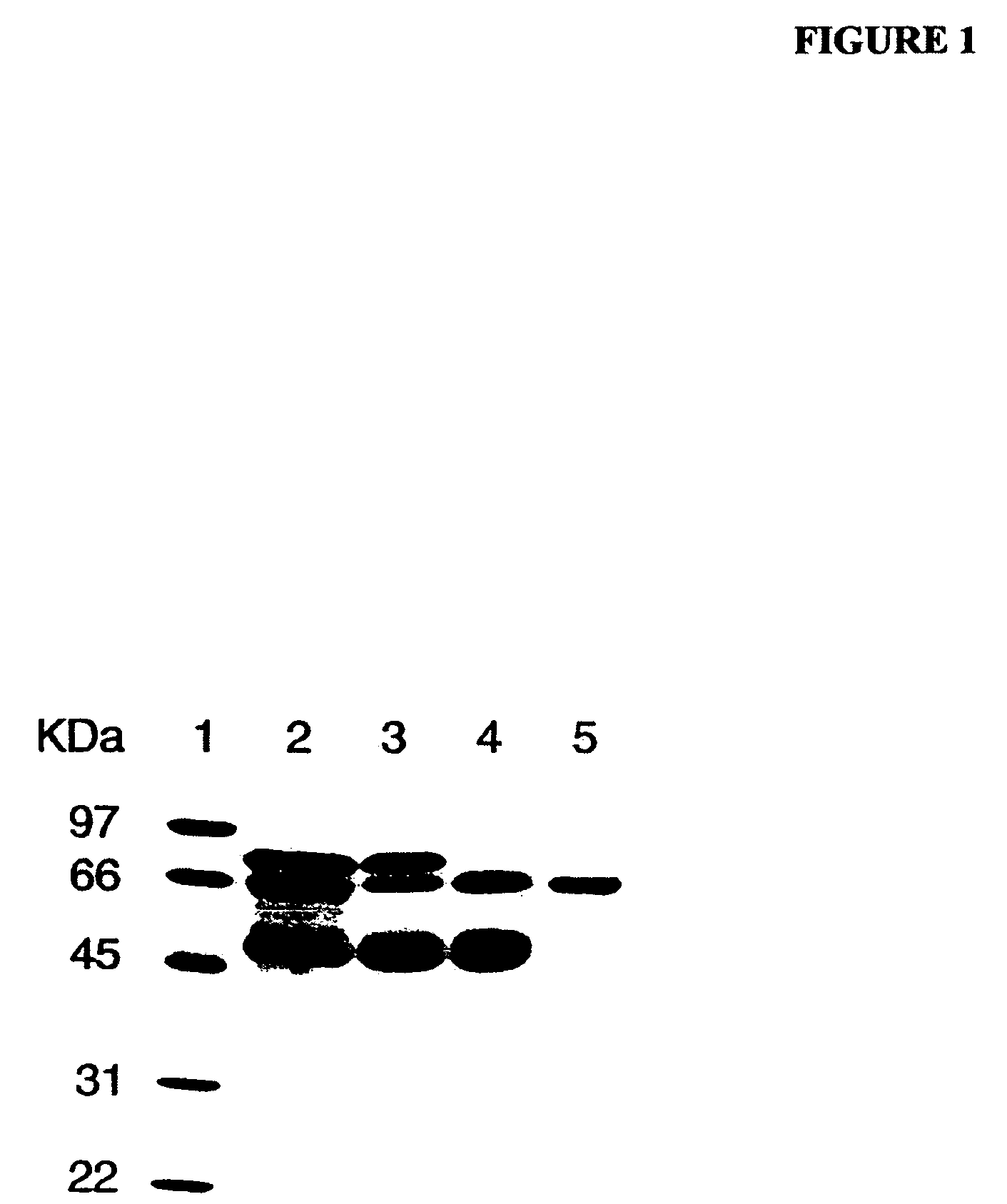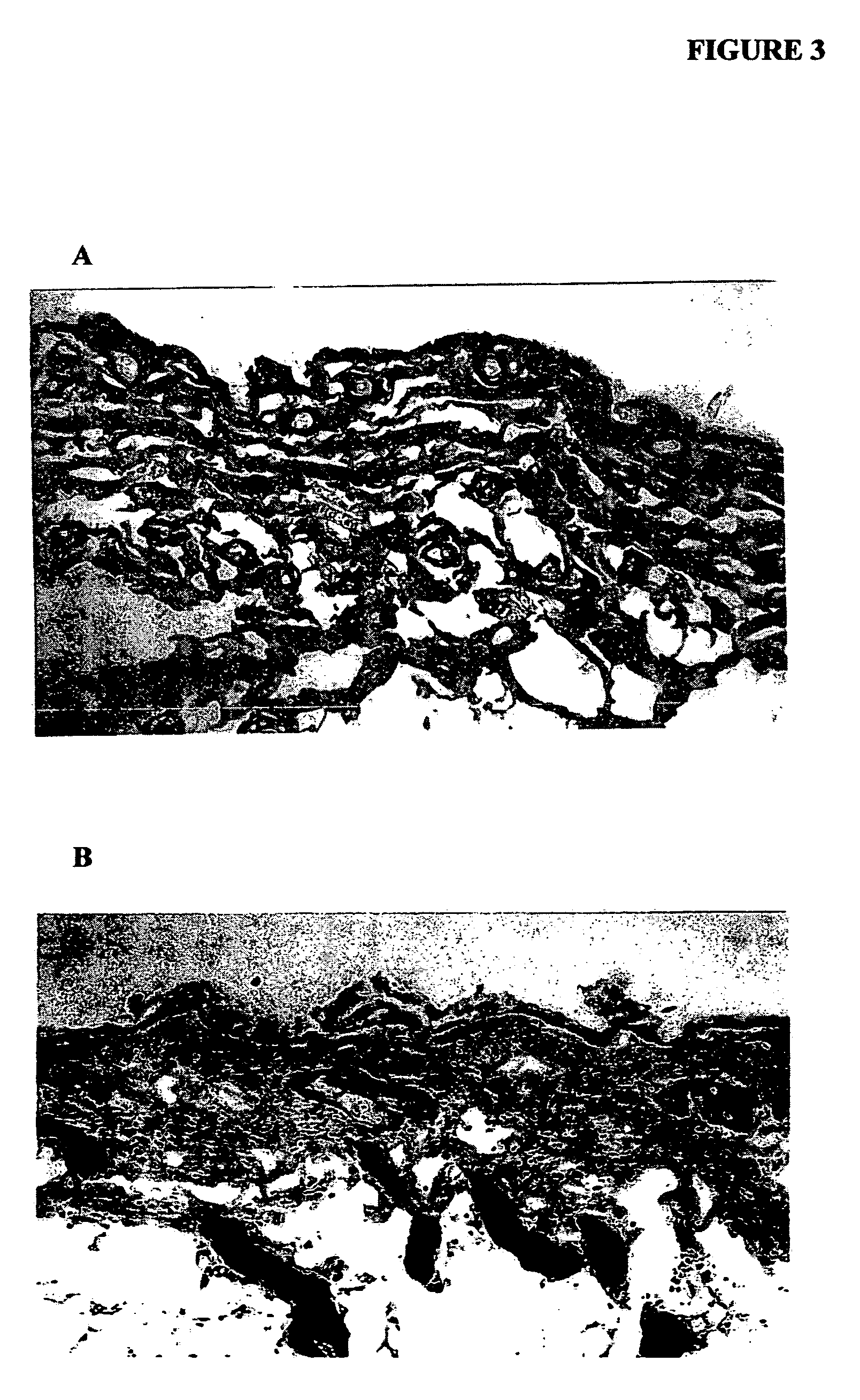Protein compositions for promoting wound healing and skin regeneration
a technology of protein compositions and wound healing, applied in the direction of drug compositions, peptide sources, peptide/protein ingredients, etc., to achieve the effects of promoting wound healing, enhancing skin quality, and enhancing compositions derived from these proteins
- Summary
- Abstract
- Description
- Claims
- Application Information
AI Technical Summary
Benefits of technology
Problems solved by technology
Method used
Image
Examples
example 1
Purification and Spectrophotometric Assay of PALP
[0167]Human PALP (Type XXIV, 1020 units of total activity) in a partially purified form was obtained commercially from Sigma-Aldrich. A butanol extraction of placental tissue, followed by one or more chromatographic steps, was performed by Sigma-Aldrich to obtain the partially purified material. Butanol extraction inactivates most of the other placental proteins, including growth factors, but does not reduce the mitogenic or enzymatic activity of PALP.
[0168]As determined by sodium dodecyl sulfate-polyacrylamide gel electrophoresis (SDS-PAGE), the partially purified PALP obtained from Sigma-Aldrich (denoted “commercial PALP” herein) was not homogeneous and contained other proteins. FIG. 1 is an image of a gel separation of a preparation comprising commercial PALP without further purification, and other preparations of PALP of increasing purity. Separation of proteins was performed by conventional SDS-PAGE, and proteins were stained wit...
example 2
Purification of AT
[0175]A partially purified human placental alkaline phosphatase preparation (PALP) was acquired from Sigma-Aldrich, Inc. AT is a major contaminant of the commercially obtained PALP. AT was first further purified by successive Concanavalin A-Sepharose and Q-Sepharose chromatography as described by Chang et al. for the isolation of PALP [Chang, T.-C., Huang, S.-M., Huang, T.-M. and Chang, G.-G. (1992) Human placenta alkaline phosphatase: An improved purification procedure and kinetic studies. Eur. J. Biochem. 209, 241-247]. The Q-Sepharose fraction, which still contained placental alkaline phosphatase in addition to AT, was further purified to homogeneity by t-butyl HIC chromatography [She, Q.-B., Mukherjee, J. J., Crilly, K. S. and Kiss, Z. (2000) α1-Antitrypsin can increase insulin-induced mitogenesis in various fibroblast and epithelial cell lines. FEBS Lett. 473, 33-36]. The 5 ml bed volume t-butyl HIC cartridge was connected to a PHARMACIA FPLC system and the fr...
examples 3-5
Combined Effects of AT, PALP, TF and AGP on Human Fibroblasts and Keratinocytes In Vitro
[0177]Iron-free human Apo-TF (aTF) and iron-containing (iron content: 1100-1600 μg per 1-g protein) human holo-TF (hTF), both at least 97-98% pure, were purchased from Sigma-Aldrich (catalog numbers T 1147 and T 4132, respectively, according to the 2004 / 2005 Sigma Catalog). Essentially pure human AGP, isolated from human blood, was acquired from. Sigma-Aldrich (catalog number: G 9885 in 2004 / 2005 Sigma Catalog). Homogeneous PALP and AT were produced as described under Examples 1 and 2, respectively.
[0178]Recombinant wild-type PALP was produced according to the method described by Kozlenkov, et al. [Kozlenkov, A., Manes, T., Hoylaerts, M. F. and Millan, J. L. (2002) Function assignments to conserved residues in mammalian alkaline phosphatases. J. Biol. Chem. 277, 22992-22999]. To simplify the recovery and purification of recombinant PALP, the glycosylphosphatidylinositol anchoring sequence of PALP...
PUM
| Property | Measurement | Unit |
|---|---|---|
| molecular weight | aaaaa | aaaaa |
| molecular weight | aaaaa | aaaaa |
| concentration | aaaaa | aaaaa |
Abstract
Description
Claims
Application Information
 Login to View More
Login to View More - R&D
- Intellectual Property
- Life Sciences
- Materials
- Tech Scout
- Unparalleled Data Quality
- Higher Quality Content
- 60% Fewer Hallucinations
Browse by: Latest US Patents, China's latest patents, Technical Efficacy Thesaurus, Application Domain, Technology Topic, Popular Technical Reports.
© 2025 PatSnap. All rights reserved.Legal|Privacy policy|Modern Slavery Act Transparency Statement|Sitemap|About US| Contact US: help@patsnap.com



